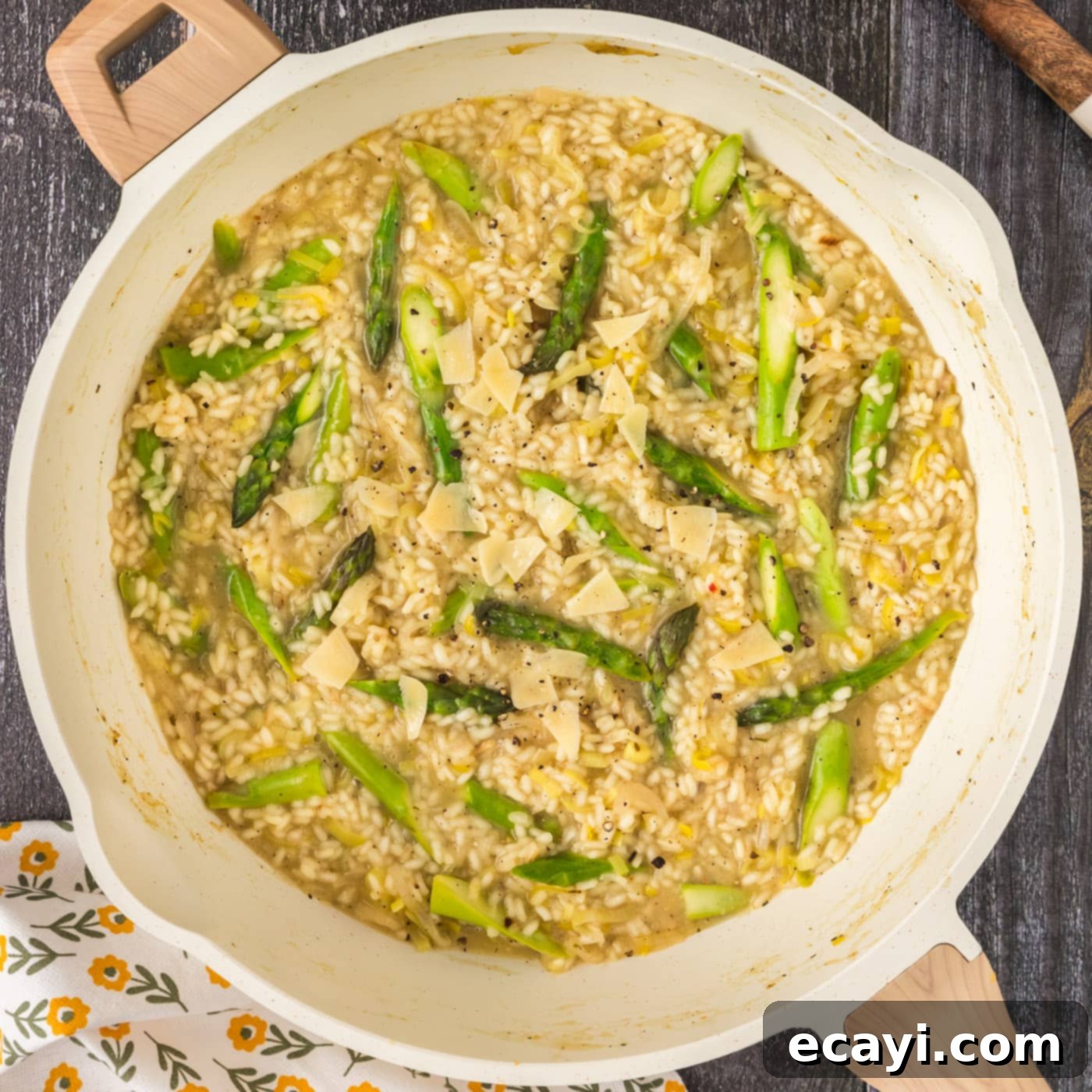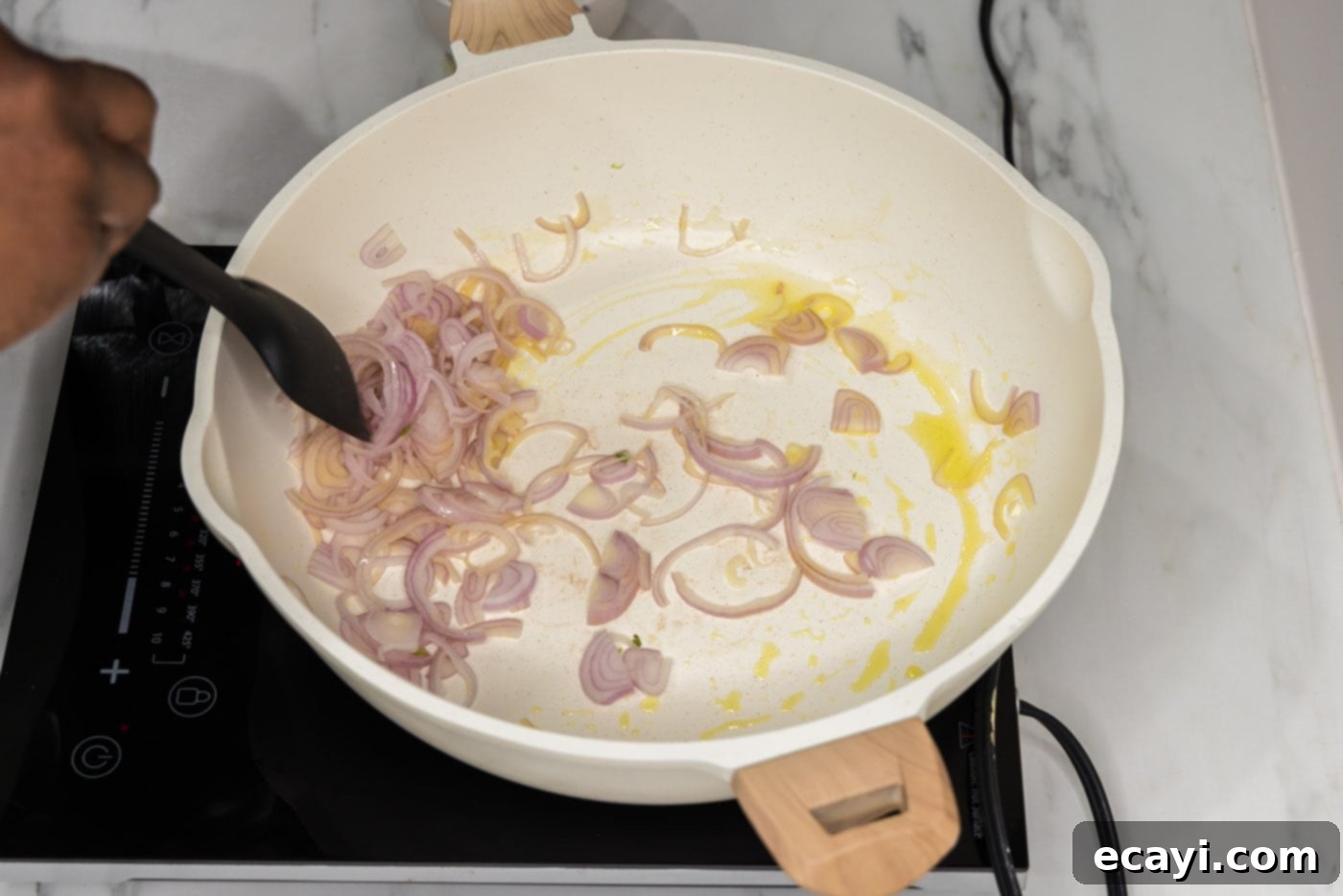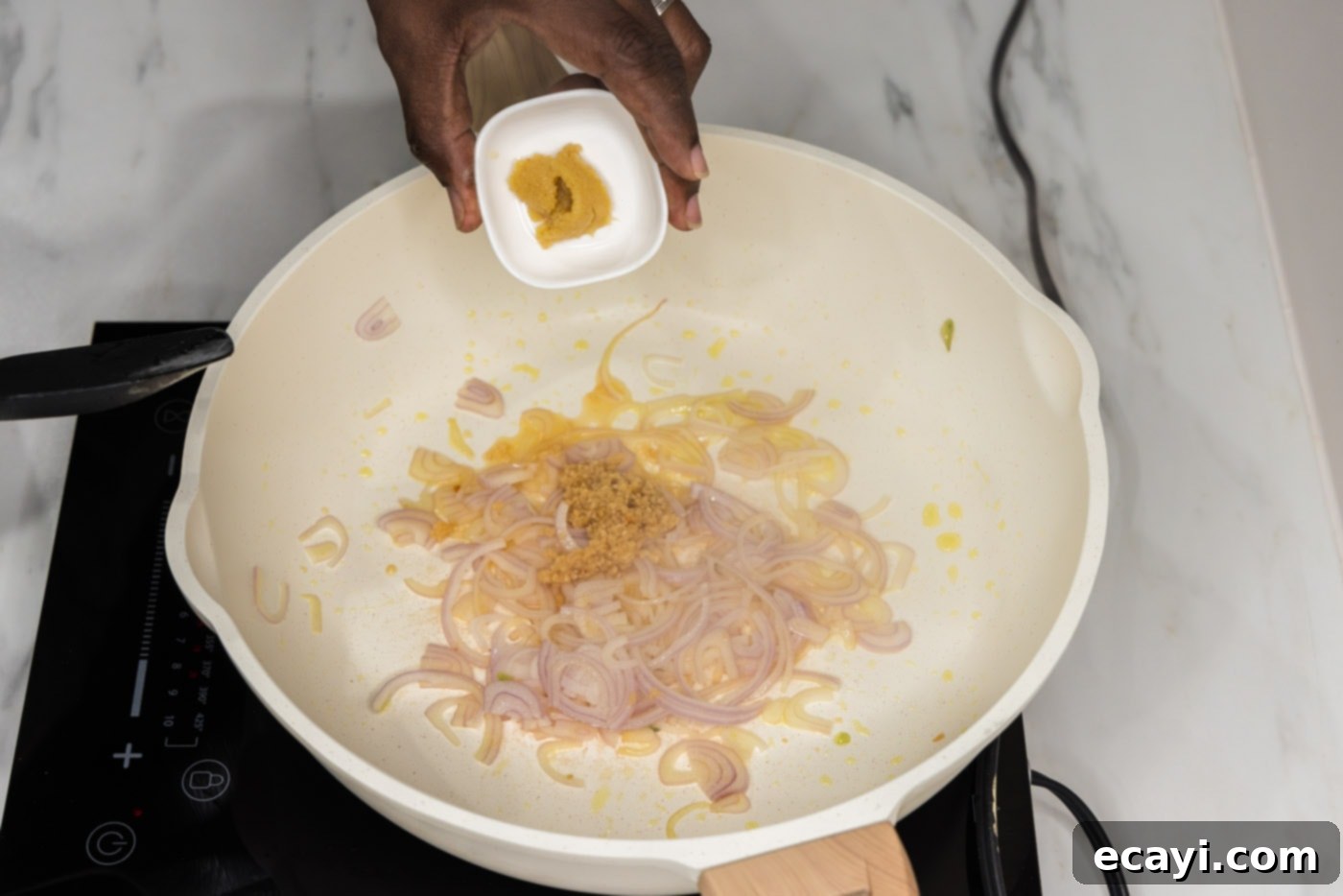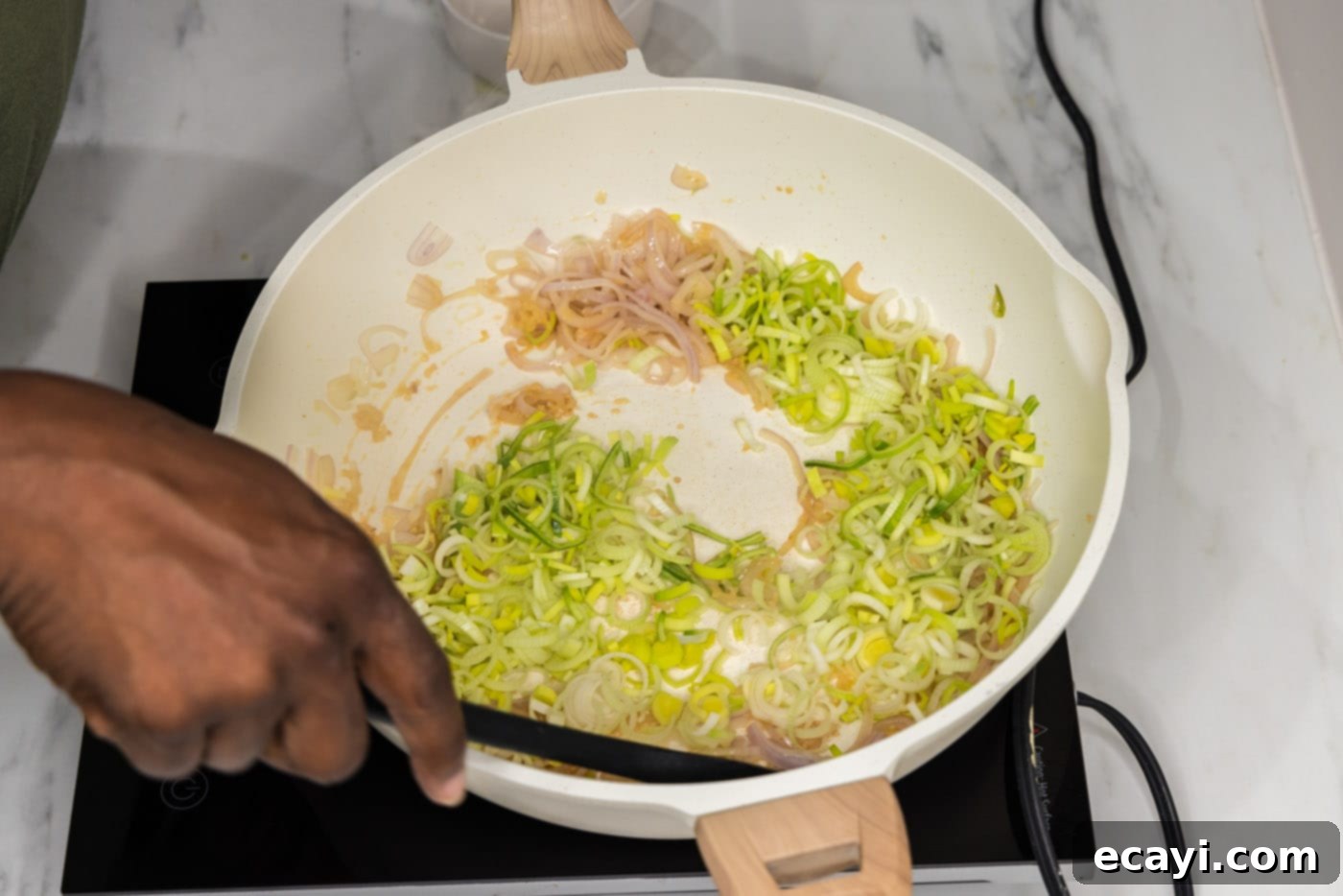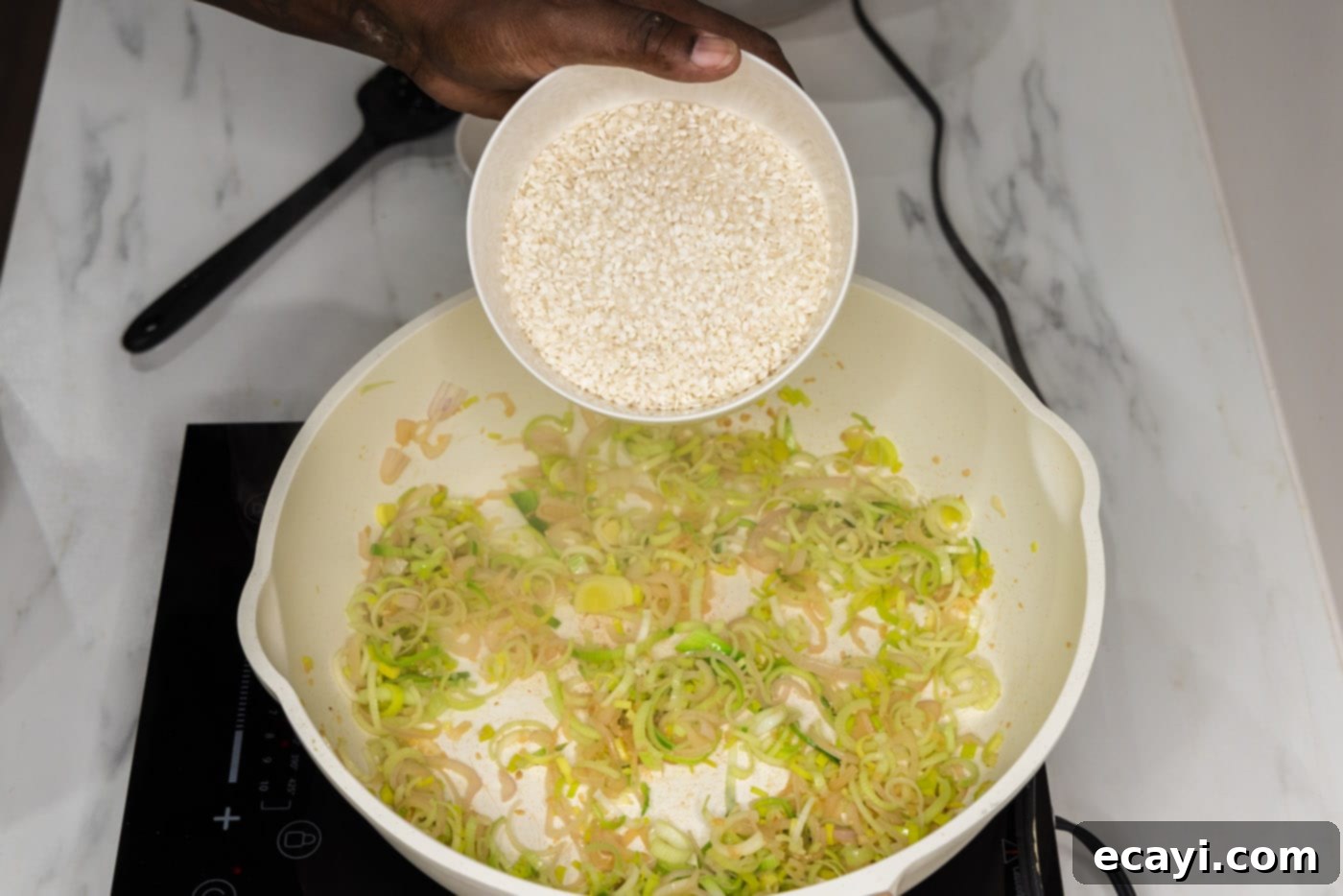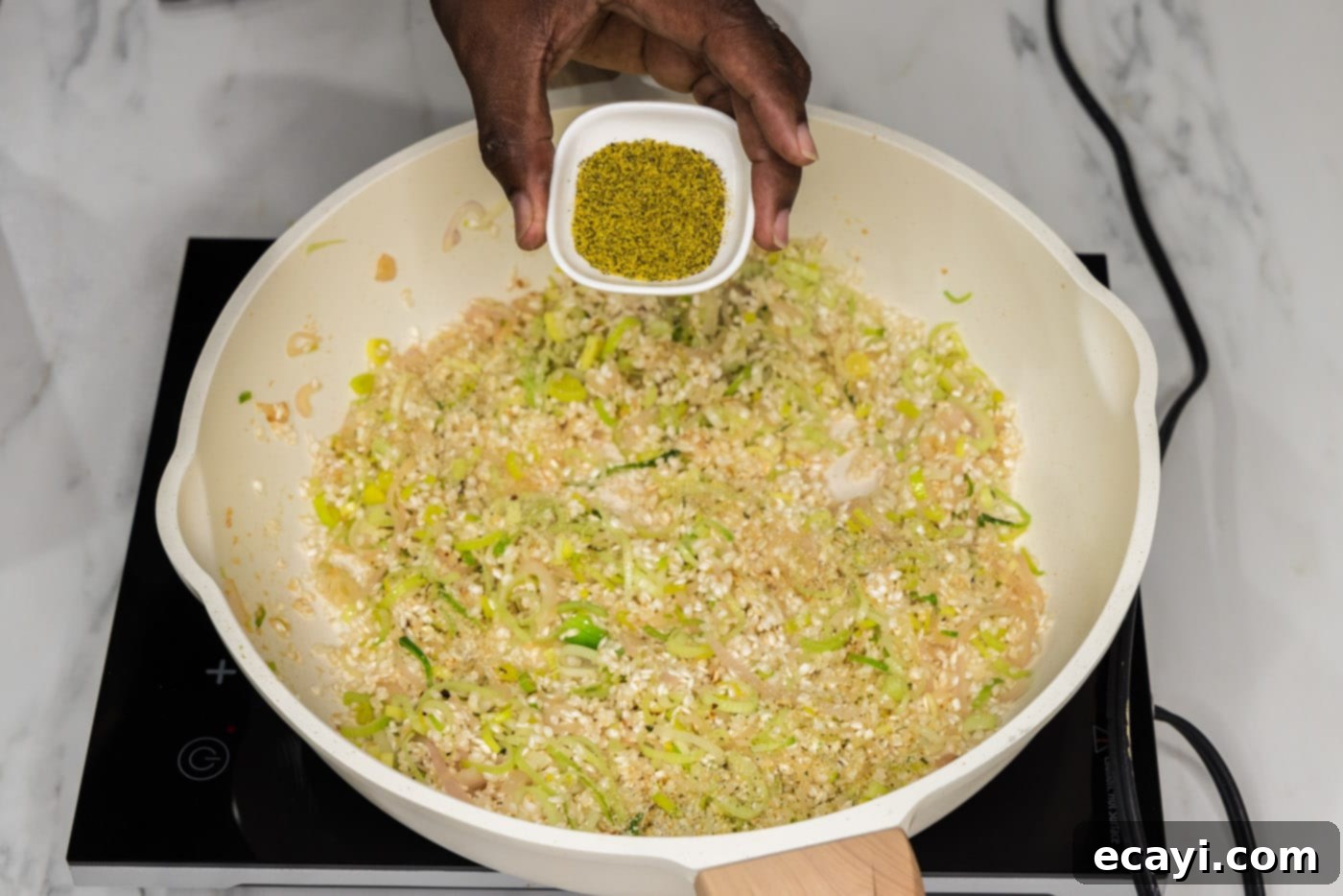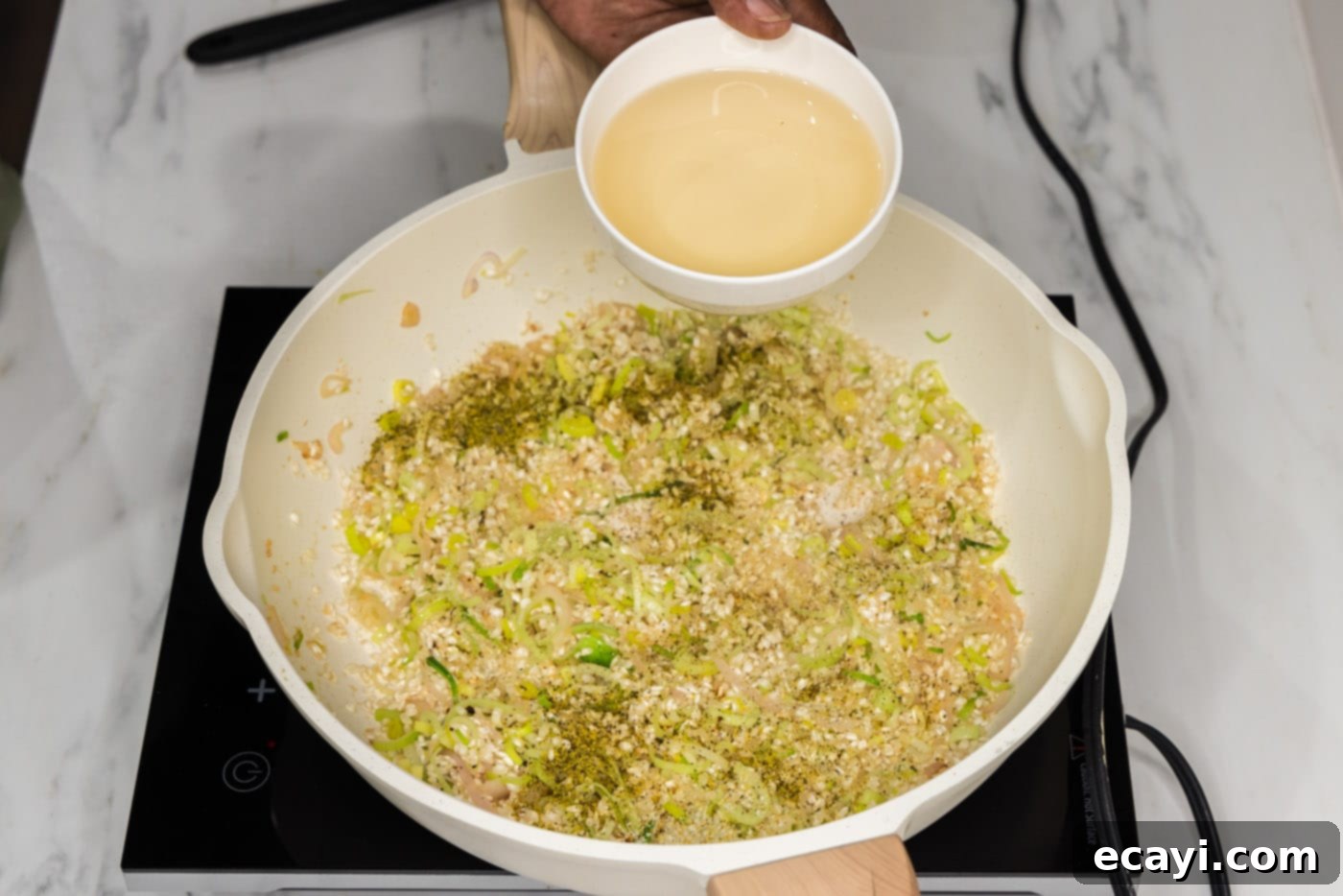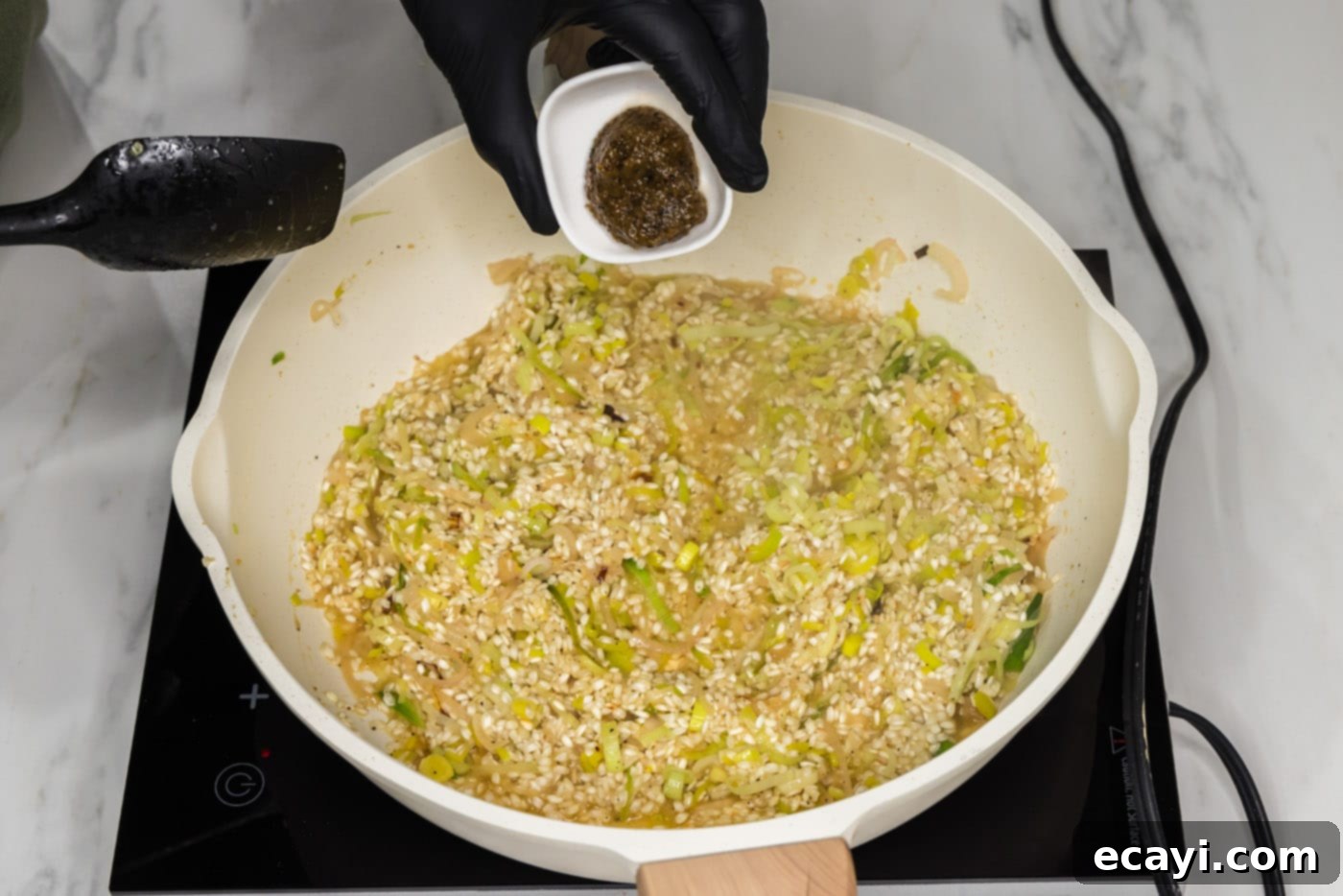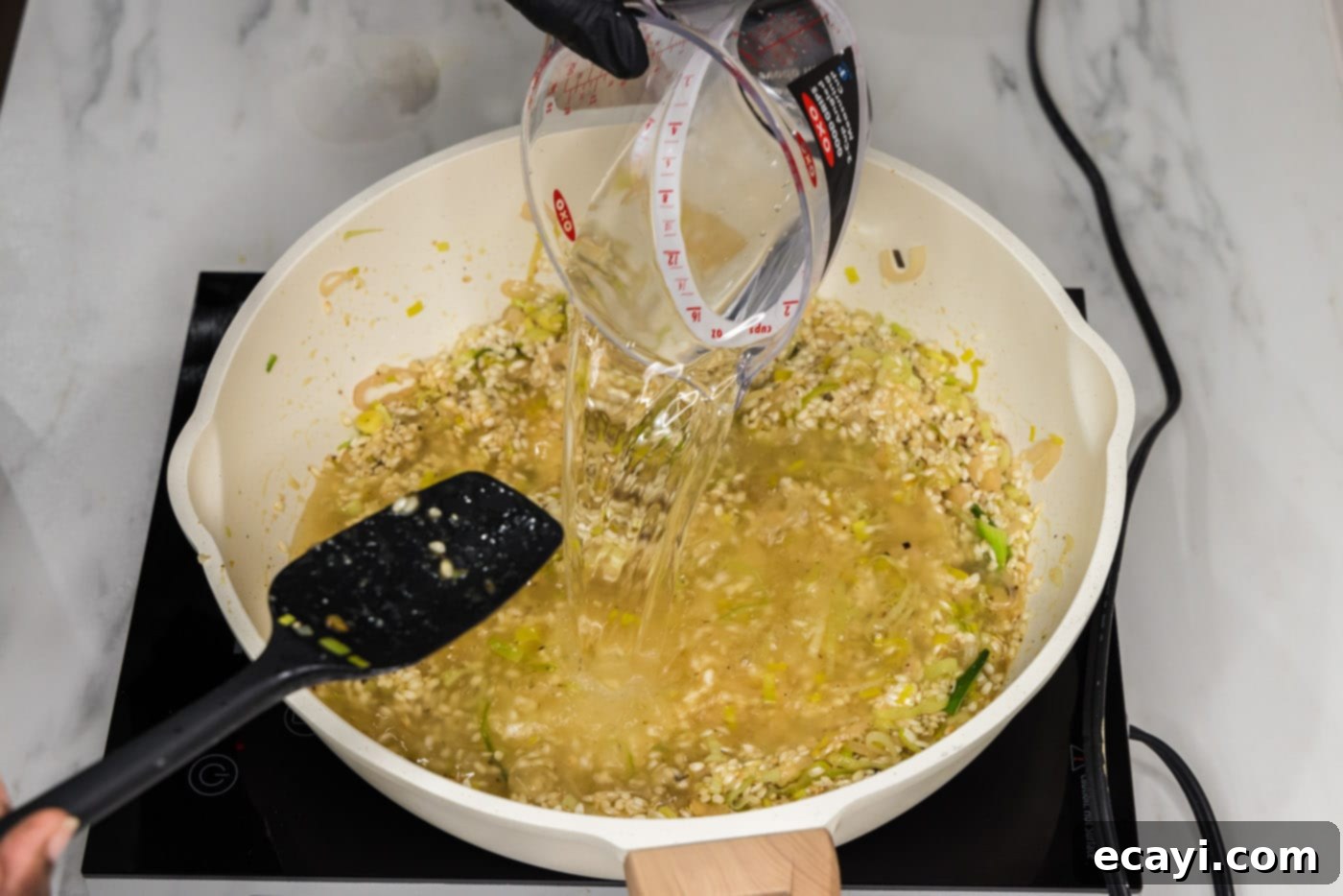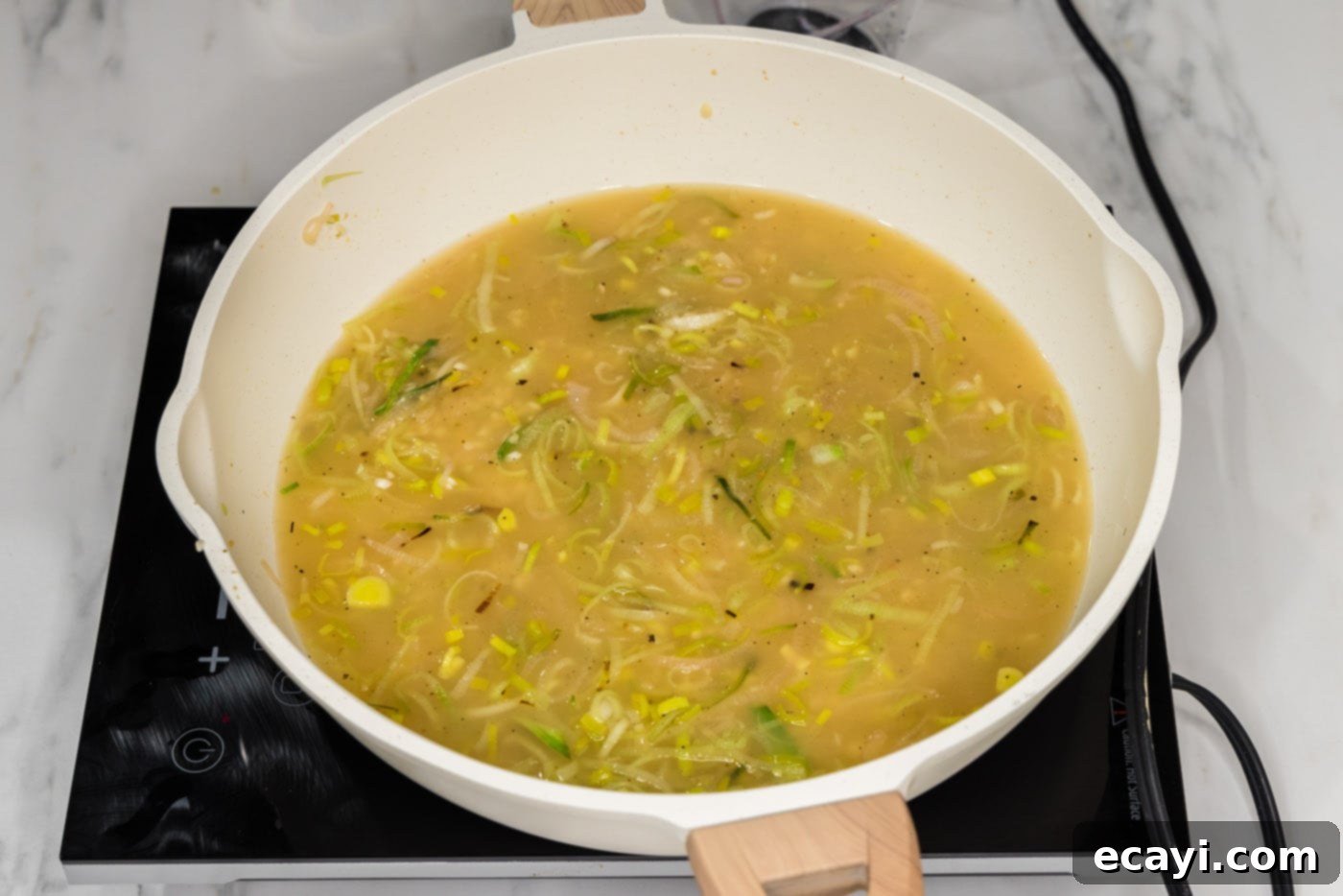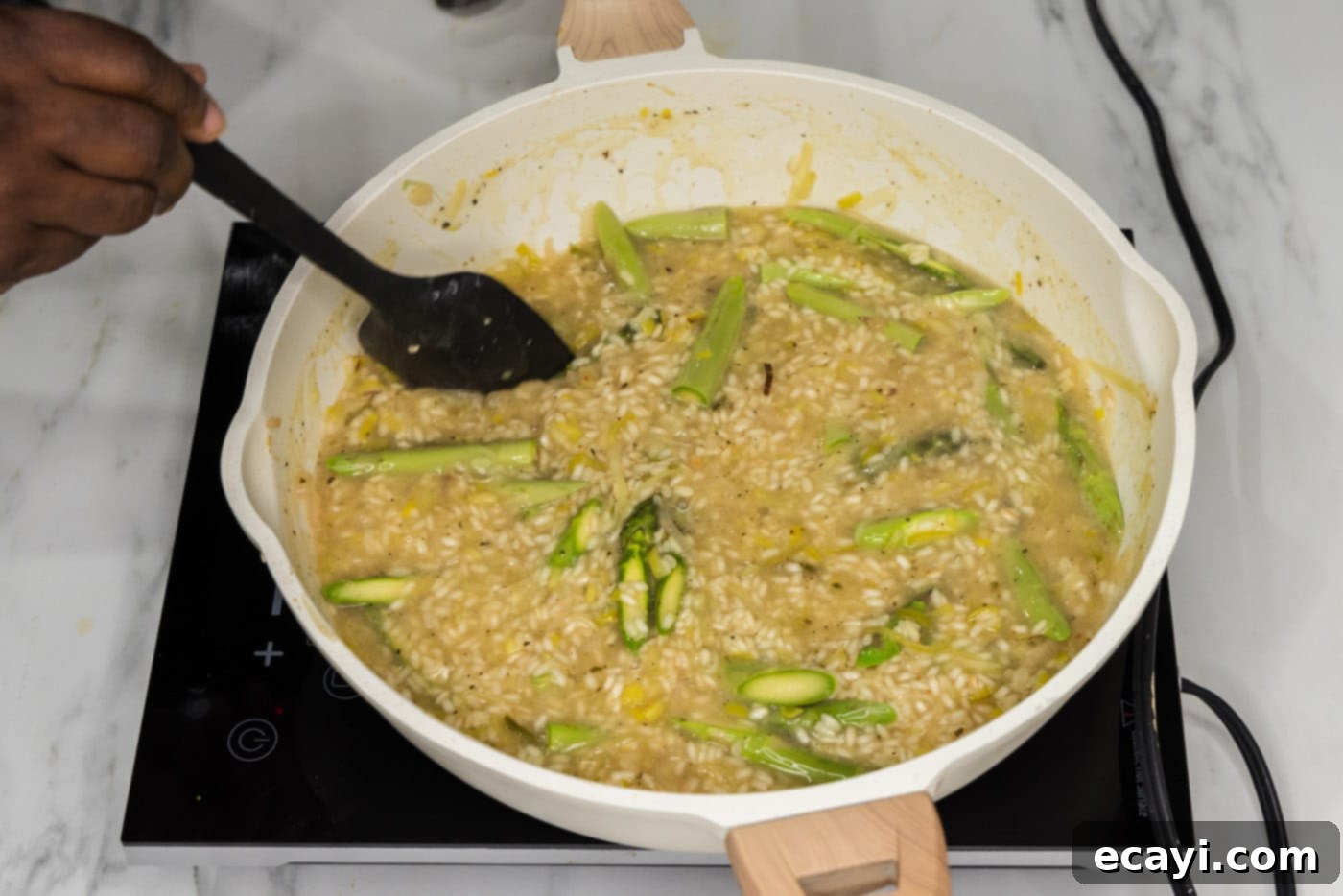Creamy Asparagus Risotto: Your Ultimate Guide to a Perfect Spring Dish
Indulge in the vibrant flavors of spring with this exquisite creamy asparagus risotto. This delightful dish features tender asparagus spears, subtly sweet sliced leeks, and savory chopped shallots, all lovingly folded into a rich, velvety Arborio rice base. Whether you’re seeking a light yet satisfying main course or an elegant, flavorful side dish to complement your favorite protein, this asparagus risotto recipe delivers on both taste and sophistication. Its effortless charm makes it a staple for any spring menu, celebrating the freshness of seasonal produce in every spoonful.
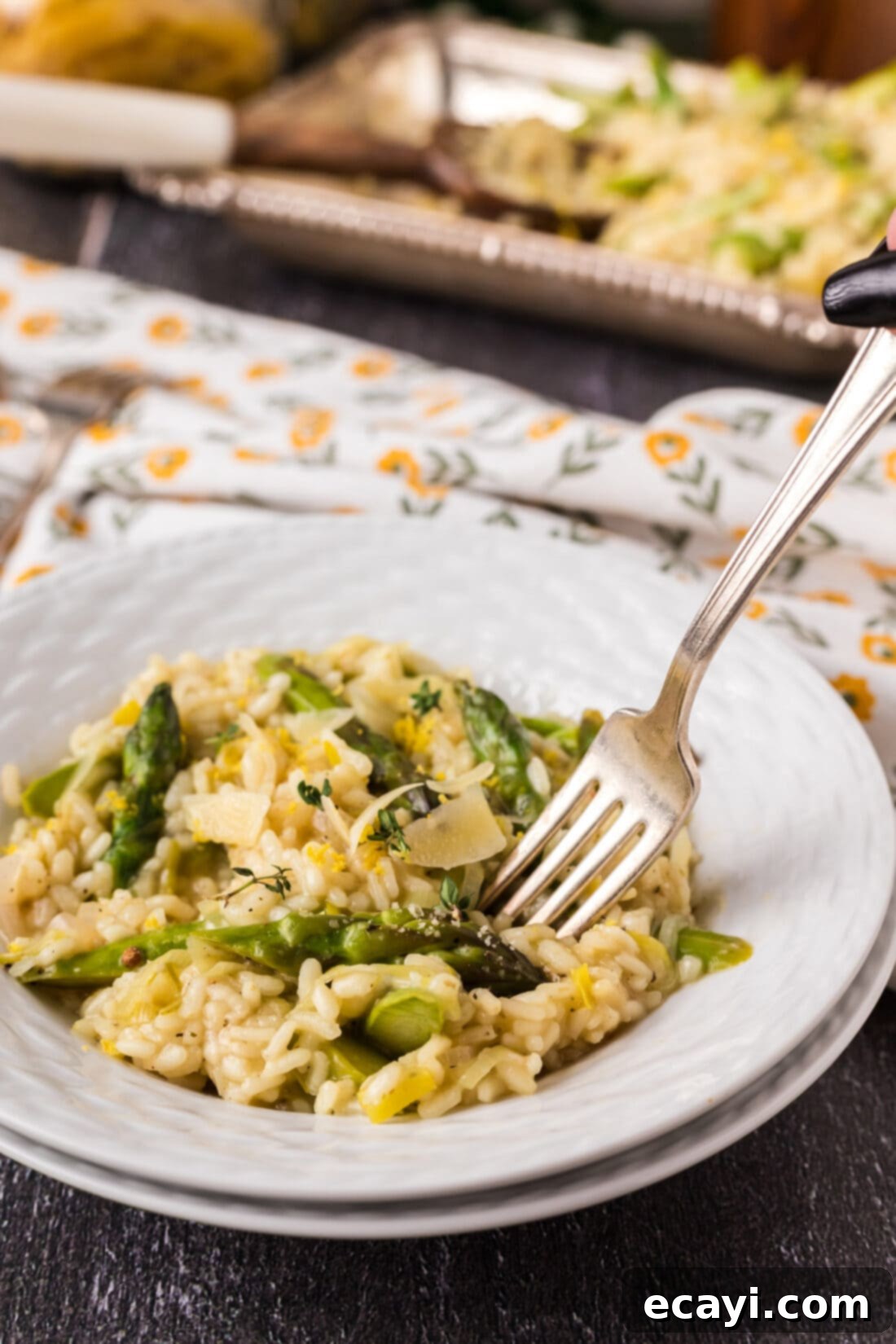
Why This Asparagus Risotto Recipe Works Beautifully
This asparagus risotto isn’t just a meal; it’s a celebration of spring, bursting with bright, garden-fresh flavors that capture the essence of the season. The moment budding asparagus and fresh leeks emerge, this recipe becomes our go-to for a comforting yet elegant dish. What makes this recipe truly exceptional is the harmonious blend of textures and tastes: the delicate bite of asparagus, the subtle oniony sweetness of leeks and shallots, and the luxurious creaminess of perfectly cooked Arborio rice. It’s a dish that feels both indulgent and remarkably fresh.
The magic happens through the classic risotto technique, where the Arborio rice slowly absorbs flavorful liquid, releasing its natural starches to create that signature velvety texture without needing excessive cream. This process, combined with a touch of white wine, infuses every grain of rice with depth and complexity. It’s a versatile dish that can stand alone as a light vegetarian main or elevate any dinner table as a sophisticated side. While the choice between a rich creamy mushroom risotto and this vibrant asparagus version can be tough when both ingredients are at their peak, this recipe stands out with its bright, green profile, offering a refreshing alternative that we eagerly anticipate making every single spring. There’s always room for both, especially when you have freshly grown, seasonal produce at your fingertips, inspiring endless culinary possibilities!
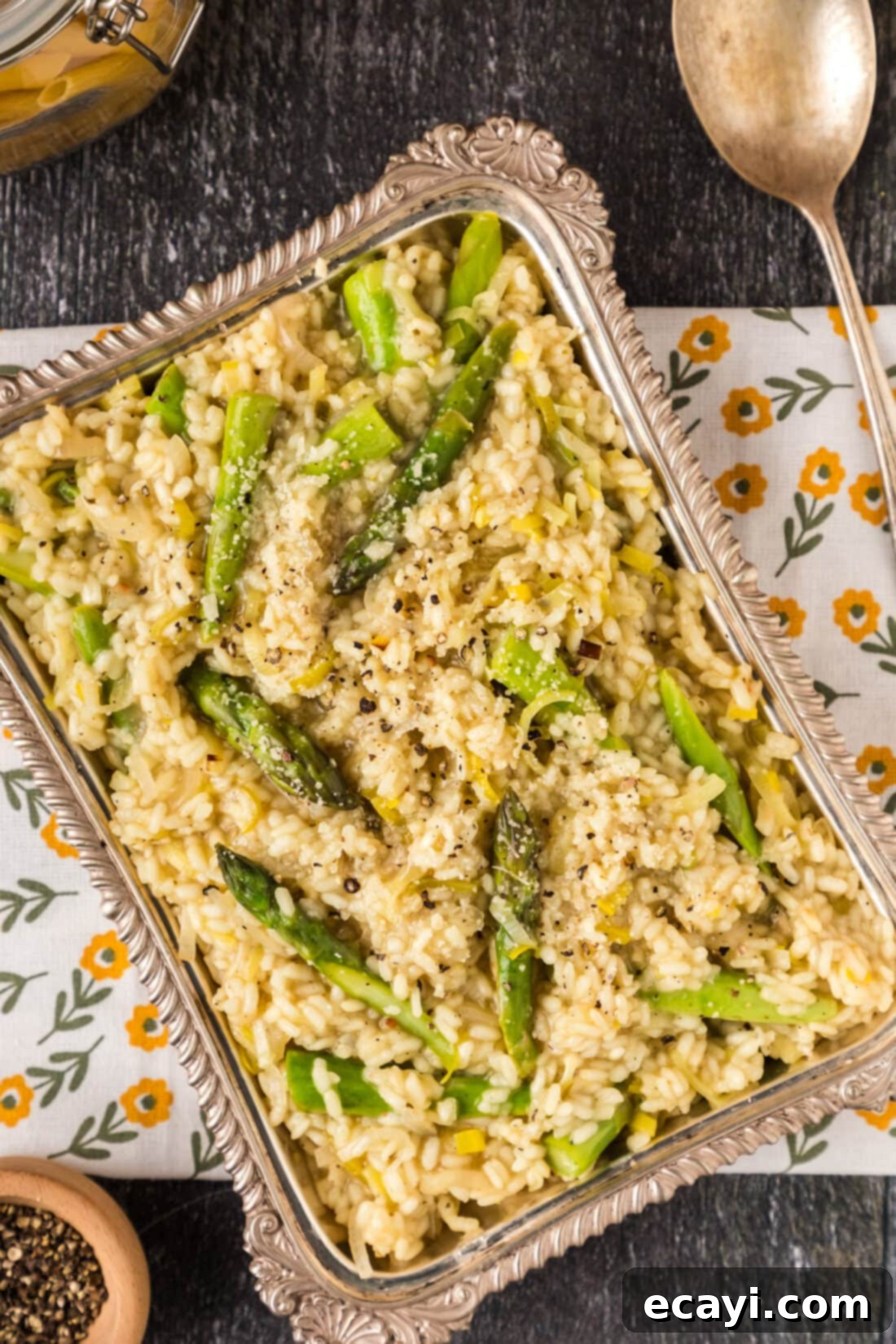
Essential Ingredients for Your Asparagus Risotto
Crafting the perfect creamy asparagus risotto begins with selecting high-quality, fresh ingredients. Below, you’ll find a detailed list of what you’ll need to create this delightful spring dish. For precise measurements and step-by-step instructions, be sure to check out the printable recipe card located at the very end of this post.
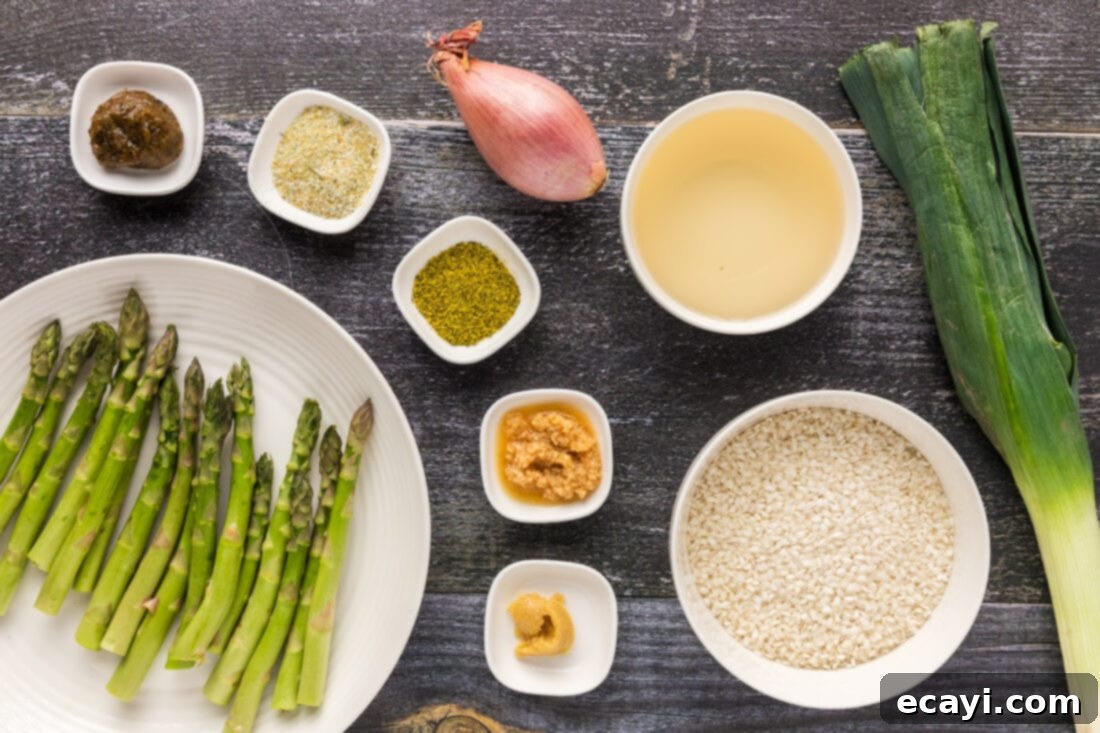
Ingredient Spotlight: Tips & Substitutions for Perfect Risotto
Understanding each ingredient and how it contributes to the final dish is key to mastering this creamy asparagus risotto. Here’s a closer look at the stars of our recipe, along with helpful tips and potential substitutions.
ASPARAGUS: When selecting asparagus, look for firm, bright green stalks with tightly closed tips. Freshness is paramount for optimal flavor and texture. Before you begin cooking, it’s crucial to trim the woody ends, which are typically about 1-2 inches from the bottom. The easiest way to do this is to snap off the ends – the asparagus will naturally break where the tough part meets the tender part. You can also carefully cut them. Once trimmed, slice the tender stalks into 2-inch pieces for even cooking and a beautiful presentation in your risotto. Asparagus not only adds a lovely green hue and fresh taste but also provides a good source of vitamins K, A, C, and folate, making this dish both delicious and nutritious.
RISOTTO (ARBORIO RICE): For a truly authentic and incredibly creamy risotto, Arborio rice is the undisputed champion. We specifically call for 1 1/2 cups to form the perfect base. What makes Arborio so special? Its short, plump grains have a high starch content (amylopectin) that is gradually released as it cooks and absorbs liquid. This release of starch is what creates that classic, luxurious, and naturally creamy consistency without needing to add a significant amount of actual cream. It also allows the rice to absorb and carry the surrounding flavors beautifully. While other medium-grain rice varieties like Carnaroli or Vialone Nano can also be used for risotto, Arborio is widely available and yields consistent, delicious results. Avoid long-grain rice, as it won’t provide the necessary starch for the desired creamy texture.
LEEKS: These mild, sweet members of the onion family bring a delicate, savory depth to the risotto without overpowering the asparagus. Proper preparation is essential due to their layered structure, which can trap dirt. Start by slicing off the tough root end, then trim off the harder, darker green leaves, reserving the lighter green and white parts. Cut the remaining leek down the center lengthwise, then rinse thoroughly under cold running water, separating the layers slightly to ensure all grit is removed. Finally, slice these cleaned halves into thin pieces for sautéing. Their gentle flavor pairs wonderfully with the shallots and garlic.
SHALLOTS: Often described as a cross between an onion and garlic, shallots offer a milder, sweeter, and more nuanced flavor than regular onions. Chopped shallots create a foundational aromatic layer that beautifully complements the spring vegetables and enriches the overall flavor profile of the risotto. They caramelize slightly during sautéing, adding another layer of complexity and a subtle sweetness that balances the brighter notes of the asparagus and lemon.
GARLIC & GINGER: Minced garlic provides that essential pungent depth and warmth, a cornerstone of many savory dishes. The addition of fresh minced ginger, while perhaps less traditional for risotto, introduces a bright, slightly spicy, and incredibly aromatic note that elevates the spring flavors of the asparagus and leeks, adding a unique and delightful twist to this recipe. Don’t skip it; it makes a subtle but significant difference, infusing an unexpected layer of freshness into the dish.
WHITE WINE: A dry white wine, such as Pinot Grigio, Sauvignon Blanc, or an unoaked Chardonnay, is crucial for deglazing the pan and adding a layer of acidity and complexity to the risotto. The alcohol cooks off, leaving behind a wonderful depth of flavor that brightens the dish and enhances the overall aroma. If you prefer to avoid alcohol, you can substitute this with an equal amount of vegetable stock, though the flavor profile will be slightly different.
BOUILLON (OR STOCK/BROTH): We often opt for bouillon bases in our recipes due to their convenience, compact storage, and long shelf life. They offer concentrated flavor that can be easily diluted with water. For this recipe, an Italian herb base works wonderfully, but a standard chicken or vegetable bouillon base is also excellent. If you prefer to use pre-made chicken or vegetable stock or broth, simply eliminate the bouillon base and replace the specified amount of water with an equal quantity of your chosen stock. Ensure your stock is warm, as adding cold liquid can shock the rice and impede the creamy starch release, affecting the final texture of your risotto.
SEASONINGS (GARLIC SALT & LEMON PEPPER): Garlic salt provides a convenient blend of salt and garlic flavor, ensuring the risotto is well-seasoned from within. Lemon pepper adds a zesty, bright kick that enhances the spring vegetables and overall freshness of the dish, making the flavors truly pop. These two seasonings work in tandem to create a perfectly balanced and aromatic risotto. Adjust to your taste preferences, adding more if you desire a bolder flavor.
Crafting Your Creamy Asparagus Risotto: Step-by-Step Guide
Embark on a culinary journey to create this delectable creamy asparagus risotto. These detailed step-by-step photos and instructions are here to guide you through the process, ensuring a perfect result every time. For your convenience, you can find the complete printable recipe, including all measurements and detailed instructions, by simply jumping to the recipe card at the bottom of this post.
- Prepare the Asparagus: Begin by washing your asparagus spears thoroughly. Grasp each spear at both ends and gently bend until it naturally snaps, indicating where the tough, woody end separates from the tender stalk. Discard the woody parts (about 1-2 inches from the bottom). Once trimmed, slice the tender asparagus into uniform 2-inch pieces. Set these aside; they will be added later to maintain their vibrant color and delicate crunch, ensuring they are perfectly tender-crisp in the final dish.
- Heat the Oil: In a large, deep-sided skillet or Dutch oven, heat two tablespoons of olive oil over medium-high heat. You’ll know it’s ready when the oil shimmers slightly but isn’t smoking. This initial heat is crucial for developing the base flavors and ensures the aromatics cook properly without burning.
- Sauté the Shallots: Add the sliced shallots to the hot olive oil. Sauté them for 1-2 minutes, stirring occasionally, until they become translucent and begin to soften. This gentle cooking releases their sweet, aromatic notes, forming the first, crucial layer of flavor for your risotto. Their mild oniony essence will infuse beautifully into the rice.

- Add Garlic and Ginger: Toss in the minced garlic and fresh minced ginger. Continue to sauté for just one more minute, stirring constantly to prevent sticking. Be careful not to burn the garlic, as this can lead to a bitter taste. The goal is to bloom their aromas, filling your kitchen with a delightful, zesty fragrance that hints at the deliciousness to come.

- Cook the Leeks: Introduce the thinly sliced leeks to the pan. Cook for an additional 3-4 minutes, stirring periodically, until they are tender and have softened considerably. The leeks will add a delicate, mild oniony flavor that beautifully complements the other aromatics, contributing to the overall depth of the risotto.

- Toast the Rice: Now, add the Arborio rice to the skillet. Cook the rice for 3-4 minutes, stirring frequently. This step, known as “toasting” or “tostatura,” is crucial. It lightly toasts the exterior of the rice grains, helping them maintain their structure and preventing them from becoming mushy, while also enhancing their nutty flavor. Each grain should become slightly translucent around the edges before moving to the next step.

- Season the Rice: Sprinkle the garlic salt and lemon pepper over the rice. Stir thoroughly to ensure the seasonings are evenly distributed and infuse into the rice grains. This is where a good portion of the risotto’s bright, zesty, and savory flavor begins to develop, setting the stage for a truly delicious dish.

- Deglaze and Begin Liquid Absorption: Pour in the white wine, bouillon base, and water (or use white wine and an equal amount of pre-made stock, as noted in the ingredient section). Stir everything together well, ensuring all ingredients are combined. Increase the heat to medium-high and bring the mixture to a gentle boil, stirring constantly. Once boiling, reduce the heat to medium and allow it to cook for 7-10 minutes, stirring occasionally, until the sauce begins to thicken and the liquid is mostly absorbed. This initial liquid infusion is important for the rice to start swelling and releasing its starches, laying the foundation for that signature creamy texture.




- Incorporate Asparagus and Finish Cooking: Finally, add the sliced asparagus pieces to the risotto. Stir them in gently to combine with the rice. Continue to cook uncovered over medium heat for another 20-30 minutes, or until the remaining liquid is absorbed and the risotto is tender, yet still retains a slight bite (al dente). Stir frequently, almost continuously, especially towards the end, to prevent sticking and encourage the creamy texture to fully develop. The asparagus should be perfectly cooked – tender-crisp and bright green. Serve immediately for the best texture and flavor, perhaps with an optional garnish!

Frequently Asked Questions & Expert Tips for Asparagus Risotto
Once your creamy asparagus risotto has fully cooled to room temperature, transfer any leftovers to an airtight container. It can be safely stored in the refrigerator for up to 4 days. When reheating, it’s best to do so gently on the stovetop over low heat, adding a splash of water, vegetable broth, or even a bit of white wine to restore its creamy consistency, as risotto tends to thicken significantly when chilled. Stir frequently until heated through.
While freezing asparagus risotto is indeed possible, it’s important to set expectations regarding texture. After freezing and reheating, the rice may become slightly mushy, and the asparagus might lose some of its vibrant color and crispness, becoming softer. However, if you have excess, you can freeze fully cooled asparagus risotto in an air-tight container or a heavy-duty gallon ziplock bag for up to 2 months. To reheat, thaw it overnight in the refrigerator, then gently warm it on the stovetop over low heat. Add a splash of water or broth and stir frequently to regain some of its creaminess. It won’t be quite the same as fresh, but it will still be delicious for a quick meal.
For the best results, opt for a dry white wine such as Pinot Grigio, Sauvignon Blanc, or an unoaked Chardonnay. The key is “dry” – avoid sweet wines, as they will alter the flavor profile of your risotto significantly. Use a wine you would genuinely enjoy drinking, as its flavor will concentrate and become a prominent note in the dish. If you prefer not to use alcohol, an equal amount of good quality vegetable broth can be substituted, though the depth of flavor will be slightly different.
Perfect risotto should be “al dente,” meaning the rice grains are tender but still have a slight, pleasant chewiness in the center. The overall consistency should be creamy and flowing, often described as a “wave” (all’onda) when gently shaken in the pan. The liquid should be fully absorbed, but the risotto should not be dry or pasty. Taste frequently towards the end of the cooking time to ensure it reaches your desired texture. This typically means stirring continuously and adding liquid gradually until the rice is just right.
Absolutely! This asparagus risotto recipe is very adaptable. To make it vegetarian, ensure you use vegetable bouillon or vegetable stock instead of chicken-based options. To make it fully vegan, in addition to using vegetable stock, omit any optional parmesan cheese garnish. The natural creaminess comes primarily from the Arborio rice itself, so no dairy cream is strictly necessary for the base of the dish, though some recipes do call for a touch of butter or parmesan at the end for added richness, which can be substituted with vegan alternatives like nutritional yeast or vegan butter.
This recipe yields approximately 7 servings, but the ideal portion size depends on how you’re serving it. If presented as a rich side dish alongside a protein like grilled salmon or roasted chicken, one cup per person is generally sufficient. However, if you’re planning to serve this delicious asparagus risotto as a vegetarian main course, we recommend a more generous portion of about two cups per serving to ensure a hearty and satisfying meal. Adjust accordingly based on your guests’ appetites and the other dishes being served.
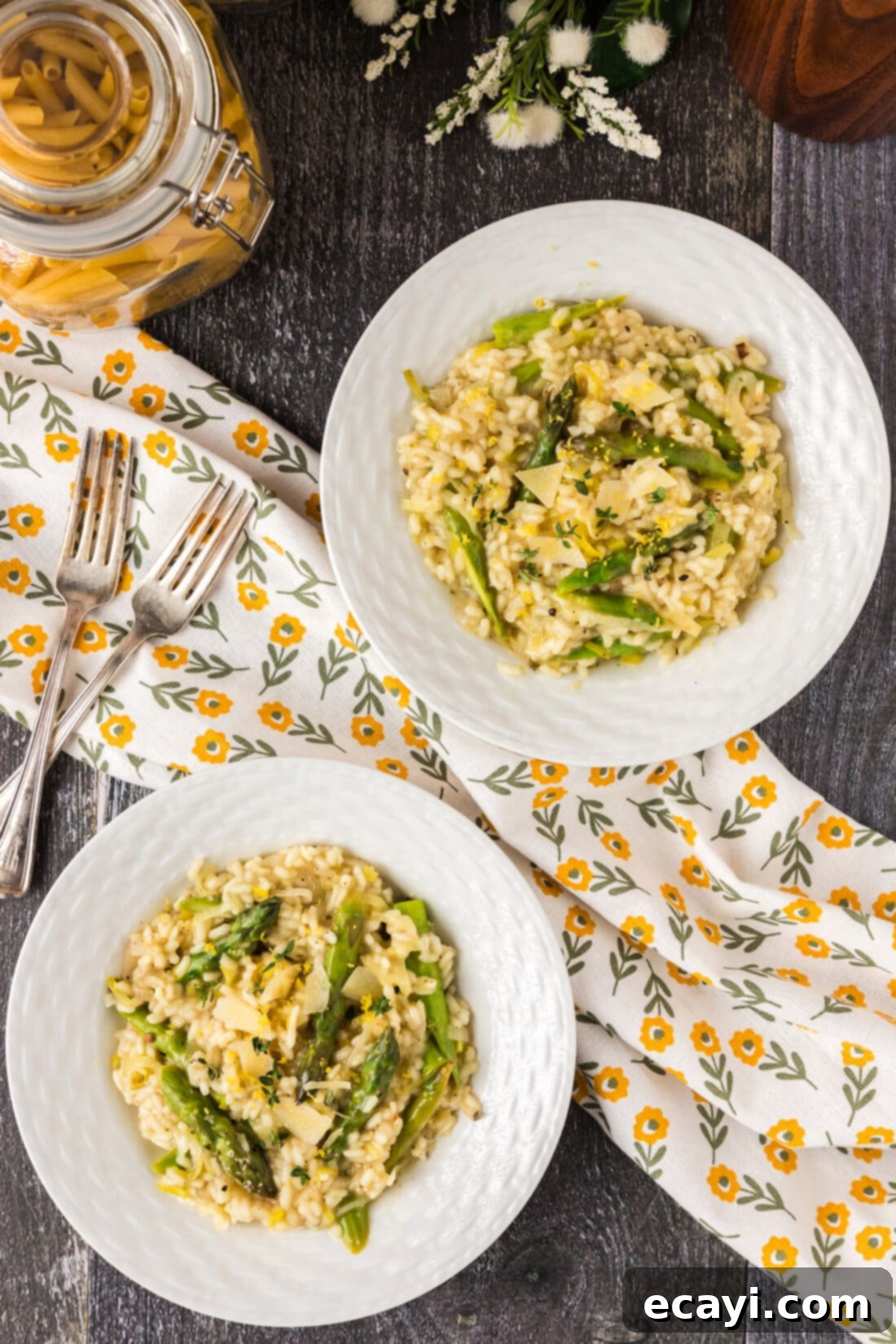
Serving Suggestions for Asparagus Risotto
This versatile creamy asparagus risotto shines whether it’s the star of the meal or a supporting act. For a truly elegant experience, serve it as a sophisticated side dish alongside perfectly grilled shrimp, pan-seared salmon, or a tender beef tenderloin. Its creamy texture and vibrant flavors beautifully complement rich proteins. As a light yet fulfilling vegetarian main course, pair it with a crisp green dinner salad and some additional roasted or steamed spring vegetables like green beans or snap peas. To elevate the presentation and add an extra layer of flavor, optionally garnish each serving with delicate shavings of fresh Parmesan cheese and a sprinkle of bright lemon zest. A drizzle of high-quality extra virgin olive oil can also enhance its richness and sheen, making it even more appealing.
More Delightful Risotto & Springtime Recipes
If you loved this creamy asparagus risotto, you might enjoy exploring other recipes that offer similar comforting textures or celebrate seasonal ingredients and rich flavors:
- Decadent Lobster Risotto
- Bright & Zesty Lemon Couscous
- Creamy Cauliflower Risotto
- Earthy Creamy Mushroom Risotto
I love to bake and cook and share my kitchen experience with all of you! Remembering to come back each day can be tough, that’s why I offer a convenient newsletter every time a new recipe posts. Simply subscribe and start receiving your free daily recipes!

Asparagus Risotto
IMPORTANT – There are often Frequently Asked Questions within the blog post that you may find helpful. Simply scroll back up to read them!
Print It
Pin It
Rate It
Save ItSaved!
Ingredients
- 1 pound asparagus spears
- 2 Tablespoons olive oil
- 3 Tablespoons sliced shallots
- 1 large leek trimmed and sliced
- 2 teaspoons minced garlic or 4 cloves minced
- 1 teaspoon minced ginger
- 1 ½ cups arborio rice
- 1 Tablespoon garlic salt
- 2 teaspoons lemon pepper
- 1 cup white wine
- 1 ½ Tablespoons Better than Bouillon Italian Herb Base
- 3 cups water
Optional Garnish
- shaved parmesan cheese
- fresh lemon zest
Things You’ll Need
-
Large deep sided skillet
-
Rubber spatula
Before You Begin
- We use bouillon bases instead of stocks or broths in our recipes. They are smaller and easier to store and have a longer shelf life. Simply add water. If you like, you can substitute chicken or vegetable stock for the bouillon and water. Simply eliminate the bouillon and replace the water with an equal amount of stock.
- When preparing leeks, slice off the root end, then trim off the harder green leaves. Cut down the center lengthwise then slice those two ends into thin pieces. Be sure to rinse thoroughly to remove any grit.
- Arborio rice is our number one choice for making risotto as it absorbs a lot of liquid and surrounding flavors. It releases starch as it cooks which results in that classic creamy consistency.
Instructions
-
Cut woody ends off the asparagus (about 1-2 inches) and slice asparagus into 2-inch pieces. Set aside.
-
Heat olive oil in skillet over medium-high heat until shimmering.
-
Add sliced shallots to the pan and saute for 1-2 minutes.
-
Toss in garlic and ginger and saute another minute.
-
Add leeks and cook an addition 3-4 minutes stirring occasionally.
-
Drop in arborio rice and cook for 3-4 minutes, stirring frequently.
-
Season with garlic salt and lemon pepper, stirring to combine.
-
Add white wine, bouillon, and water (or white wine and stock – see note above) and stir to combine. Cook over medium-high heat, bringing to a gentle boil. Turn down to medium and cook for 7-10 minutes or until sauce begins to thicken.
-
Add in sliced asparagus and stir to combine. Cook uncovered for 20-30 minutes, or until water is absorbed and risotto is tender.
Expert Tips & FAQs
- We state that this makes 7 1-cup servings. However, that is if you are serving this as a side. For a vegetarian main dish, use 2 cups as a serving.
- Store leftovers in an airtight container (once fully cooled) in the refrigerator for up to 4 days. Reheat gently on the stovetop with a splash of broth or water.
Nutrition
The recipes on this blog are tested with a conventional gas oven and gas stovetop. It’s important to note that some ovens, especially as they age, can cook and bake inconsistently. Using an inexpensive oven thermometer can assure you that your oven is truly heating to the proper temperature. If you use a toaster oven or countertop oven, please keep in mind that they may not distribute heat the same as a conventional full sized oven and you may need to adjust your cooking/baking times. In the case of recipes made with a pressure cooker, air fryer, slow cooker, or other appliance, a link to the appliances we use is listed within each respective recipe. For baking recipes where measurements are given by weight, please note that results may not be the same if cups are used instead, and we can’t guarantee success with that method.
